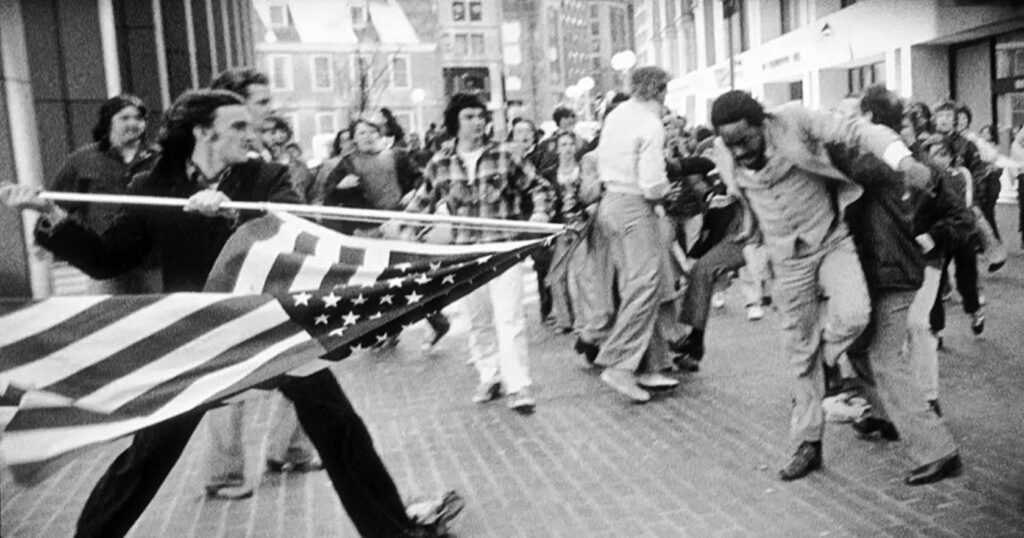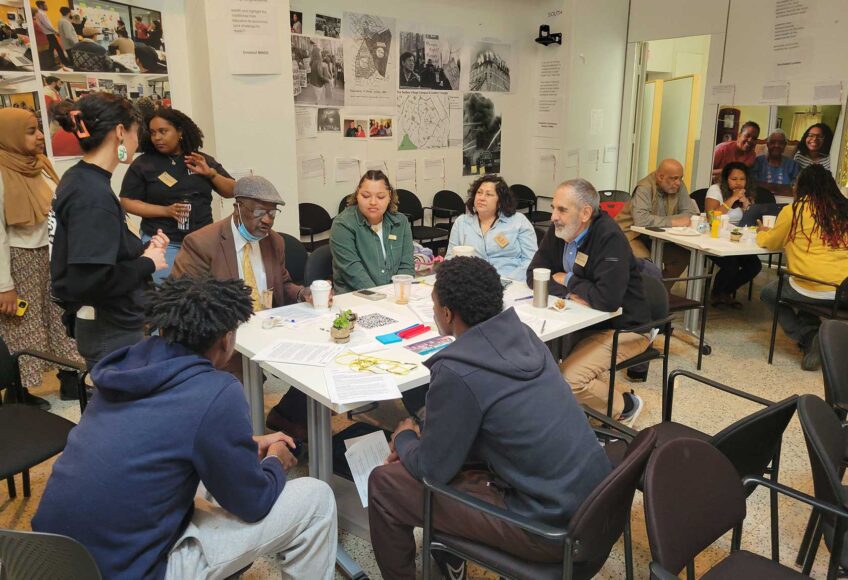The lasting impact of one iconic photo
Stanley Forman’s powerful image from Boston’s busing crisis became a catalyst for change

The incident occurred in a snatch of time.
On April 5, 1976, Theodore “Ted” Landsmark, a Black, New York-born lawyer living in Boston, was rushing to a meeting with a development agency to discuss how to create opportunities for minority construction workers. When the 29-year-old reached City Hall Plaza, he crossed paths with a rowdy group of antibusing demonstrators.
Nearby, a news reporter was on site. Stanley Forman, a photojournalist who had asked to cover the demonstration, had been photographing the mob. He noticed a Black man — Landsmark, dressed in a three-piece suit — in the vicinity and had a hunch the situation would escalate.
Acting on his instinct, Forman pointed his camera in Landsmark’s direction, thus capturing the moment one of the demonstrators attacked the unsuspecting lawyer with a pole bearing the American flag. The image became the Pulitzer Prize-winning photo “The Soiling of Old Glory.”
“At that moment, I didn’t realize the impact of what I’d just photographed,” Forman said at a fireside chat on Feb. 27. The event was held at Foley Hoag, the law firm that took on pro bono the monumental Morgan v. Hennigan (1974) court case that led to school desegregation in Boston.
Sitting side by side, Landsmark and Forman recounted the day from memory, reflecting on the striking image’s immediate effects and its impact nearly 50 years later.
“What the photo did was to force Bostonians from the region to hold a mirror up to themselves and to ask themselves how it was that this horrible thing could have happened to an innocent person who hadn’t provoked anything,” Landsmark said. Today, he is a professor of public policy and urban affairs at Northeastern University and a civil rights advocate.
The demonstrators “chose the wrong guy to attack,” said Landsmark, who grew up in a family that was actively involved in the civil rights and social justice movements. During the attack, his mind was set on survival. But immediately after, he saw an opportunity.
When he found himself standing alone on City Hall Plaza with a broken nose, he took a moment to consider what he would say to reporters. He wanted to communicate that the incident was not about him but instead spoke to the times in which he was living.
“I felt immediately that I needed to place that moment into a larger context and not personalize what had happened,” he said, “because those high school kids didn’t know me, and I didn’t know them. But they represented a level of racism in the city, and I felt that I represented a person who had been immediately victimized … less by them than by a larger system of systemic racism.”
He said the iconic photograph establishes enough distance in time between what happened then and what’s happening now, making people comfortable enough to discuss the social justice issues Boston continues to grapple with today.
For his part, Forman said when he took the photo, he didn’t know Boston was racist but acknowledged that it was because he wasn’t the one being attacked. He was simply a reporter doing his job. Years later, when he looked back on the image, he was “amazed at how much hate there was.”
“I’m sorry it happened,” he said. “I’m glad I’m the one that got that picture.”
Landsmark said he was glad, too. He said Forman could have hardly performed a better service because the photo opened the door for conversations about race and social justice, which he hopes will continue.
The same commitment to social justice that drove a young Landsmark in the 1970s still drives him today. He is part of the city of Boston-funded Reparations Task Force selected to investigate Boston’s ties to the Atlantic slave trade and its recent history of discrimination against African Americans.
“Work on racial justice is part of a continuum that began long before I was born, and will continue until we can achieve justice,” he said. “And the work I did on voting rights or economic development in the ’60s is being carried on now through discussions about reparations.”
Jeff Mullan, the Foley Hoag attorney who moderated the talk, said “The pursuit of justice isn’t over.” In the 1970s, the firm used the award money from the Morgan v. Hennigan (1974) case to establish the Foley Hoag Foundation.
The foundation has continued its socially oriented work. It awards grants, works with a pro bono program to match its lawyers to organizations that are central to its mission and raises awareness of important issues, as it did with the fireside chat.
“It’s as Ted said: It’s all about the conversation right now. I know that’s not enough, but it’s something. It gets people thinking, and maybe they’ll leave, and they’ll do something else,” he said.
Looking toward the future, Landsmark said there has been progress in the public sector, but there’s still work to be done in the private sector, specifically in corporations and universities.
“I believe the emerging generations of activists will bring about change in those areas,” he said, “in much the same way civil rights activists were able to bring back progress in voting rights and education.”





